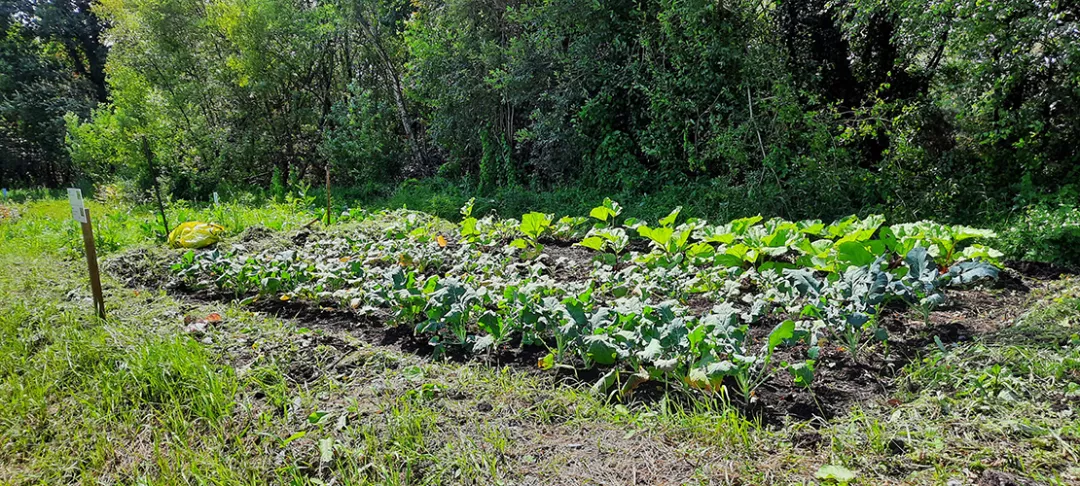Inspirational idea: Farm carbon
New approaches for sustainable farming of peatlands.
Drained peat grasslands in Ireland emit up to eight million tonnes of carbon dioxide every year, representing one of the largest single sources of greenhouse gas emissions. At the same time, farm incomes are declining. The Irish Operational Group called ‘Farm Carbon EIP’, which is run by the Green Restoration Ireland cooperative, combined these threats and turned them into an opportunity. They are looking into the feasibility of results-based payments for farmed peatlands to diversify farmer revenues and support the rural economy as well have a significant impact on the environment.
“Peatlands may only comprise 3% of the earth’s surface but studies have found that they hold nearly 30% of the world’s terrestrial carbon stock,” says Douglas McMillan, project manager. If peatlands are drained or not well maintained, the carbon is released into the atmosphere. In the EU, drainage-based agriculture on peatland soils accounts for approximately 25% of all EU agricultural carbon emissions, giving rise also to water pollution, soil degradation and subsidence and loss of biodiversity.
This Operational Group wanted to address this challenge by looking into the opportunities of carbon farming. Carbon farming is the implementation of agricultural practices that improve the rate at which carbon dioxide (CO2) is removed from the atmosphere and sequestered into plant material and soil organic matter. Restoration of peatlands and wetlands that reduces oxidation of the existing carbon stock and increases the potential for carbon sequestration is a key strand of the EU’s Communication on Sustainable Carbon Cycles which is linked to the Farm to Fork Strategy.

In the case of Ireland, about 21% of the country’s surface is covered in peat soils which contain an estimated 2.2 billion tonnes of carbon. In Ireland we also find 50% of western Europe’s remaining raised bogs and 8% of the world’s blanket bogs. Peatland habitats are at the heart of many Irish farms. The Operational Group applies an approach based on ‘community and nature at the core’ and seeks to restore and give value to these habitats. In order to protect them, the water tables are raised on the peat grasslands that surround them, creating buffer zones.
In this project, the project partners teamed up with a voluntary group of just over 20 farmers of agricultural peatlands in the counties of Offaly, Laois and north Tipperary located in the centre of Ireland. This forms part of the ‘Just Transition’ region in Ireland where employment has suffered due to the closure of peat-fired power stations and harvesting of peat for horticultural products.
In the first part of the project, scientific studies were carried out by the participating farms. Data was collected on the carbon farming measures which can be applied in different peatland uses (pasture, forestry/woodland and cutover). Three main environmental parameters were studied: biodiversity, soil quality/greenhouse gas emissions and water quality. From the studies, a set of measures best suited to improve the habitats across the whole farms were proposed, ranging from rewetting peatland to hedge-laying and pond creation. A methodology was also developed from the available scientific evidence to predict emissions from peat grasslands based on average water table levels as the basis for an ‘Irish Community Peatland Code’.
The measures applied included some which are tried and tested and other more recent and innovative technologies and farm practices. Douglas explains: “With respect to peat pastures, a range of options is provided depending on the intensity of use, so mitigation measures can include partial re-wetting, full re-wetting and habitat restoration, or paludiculture (wetland agriculture).”
These integrated, regenerative, carbon farming practices generate cost savings through reduced inputs and offer new sustainable approaches to farming peatlands. This includes paludiculture trials testing multispecies swards, fruits (blueberry, chokeberry, cranberry and lingonberry), vegetables (brassicas, celery, rhubarb), commercial timber (liquidambar, dawn redwood etc.) and raw materials for the bio-economy (cattails, common reed and Sphagnum).
This Irish Operational Group also developed a results-based, agri-environmental scheme that rewards farmers and land-owners for improving the environmental services of their farms by regenerating their farmed peatlands. These schemes will be refined as more data becomes available from measurement of the post-restoration effects. The 20 or so initial participating farms have received these payments and the aim is that the project will be incorporated into a larger future initiative to help meet national targets for rewetting.
Over the next few years, the project partners are also going to continue working on the eco-scheme for ‘peat-friendly’ farm produce and products from farms implementing these measures will be certified to improve visibility for consumers and add value for farmers.
Doug concludes: “Farm Carbon wanted to provide a comprehensive scalable framework to guide future policy that regenerates the land and provides environmental and economic sustainability for Irish peatland farms.”
Contact information
Douglas McMillan
Email: doug@greenrestorationireland.coop
Telephone number: 00353 87 9678372
